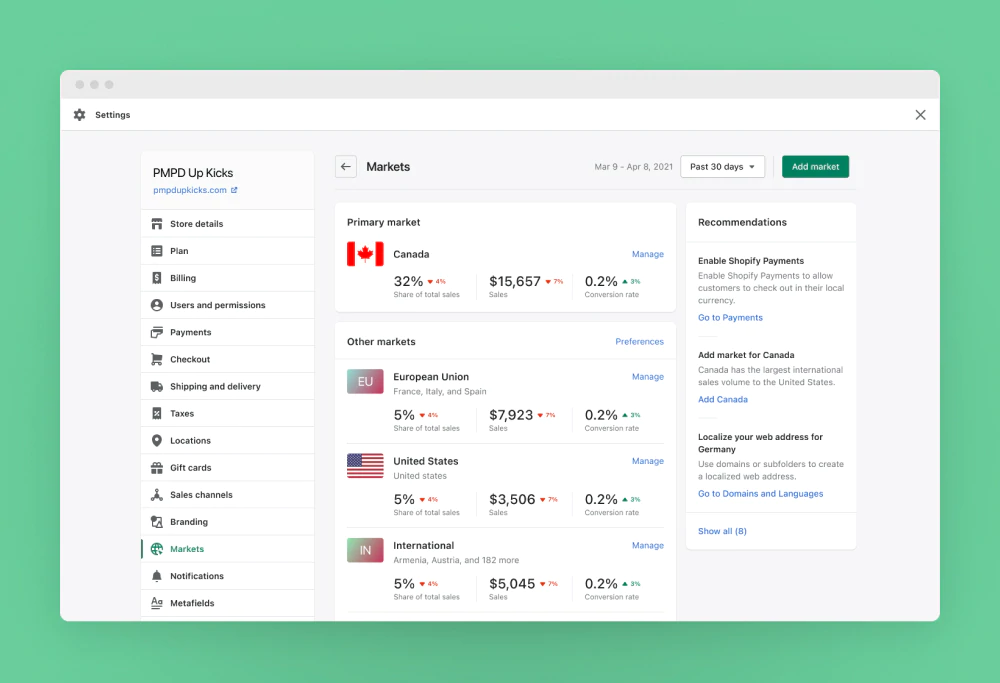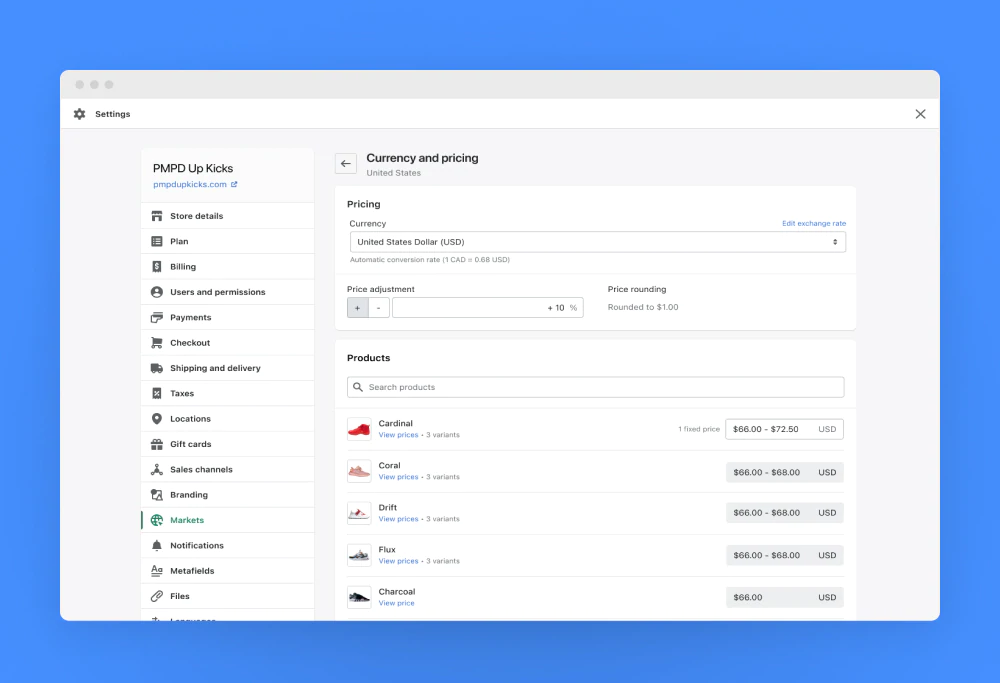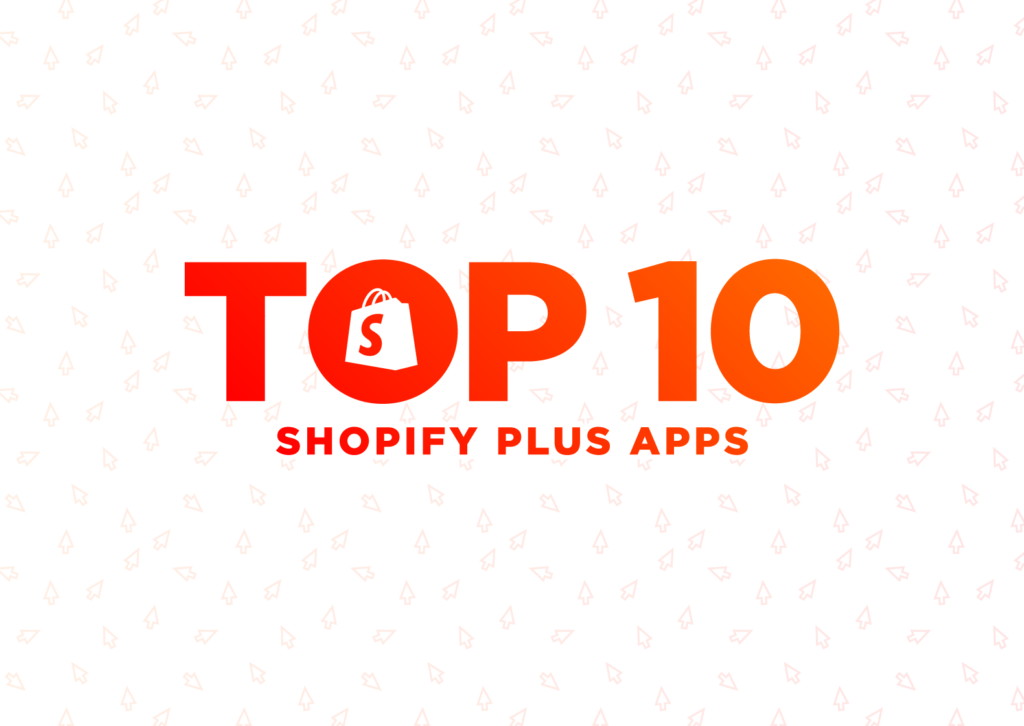With some strategic optimization and fancy beta tools, merchants can thrive using Shopify Plus for international markets.
Shopify Plus is an investment, but merchants that use each feature properly can access a wealth of new markets. International markets are extra profitable. However, a store that works well in America won’t always work well in another country. To succeed around the globe, a website needs accurate translations, location-specific storefronts, price adjustment, and more. International eCommerce stores may be profitable, but they’re really hard to build.
Luckily, platforms like Shopify Plus make international eCommerce easier. Some of the bigger hurdles are wiped away entirely, while others just require a little optimization. In just a few simple steps, you can learn how to optimize Shopify Plus for international markets.
Want to give Shopify a try? Use our affiliate link for a free trial or reach out to our Shopify Plus development team today!
International Shopify Plus To-Do List
To launch an international store on Shopify Plus, a merchant needs to work on . . .
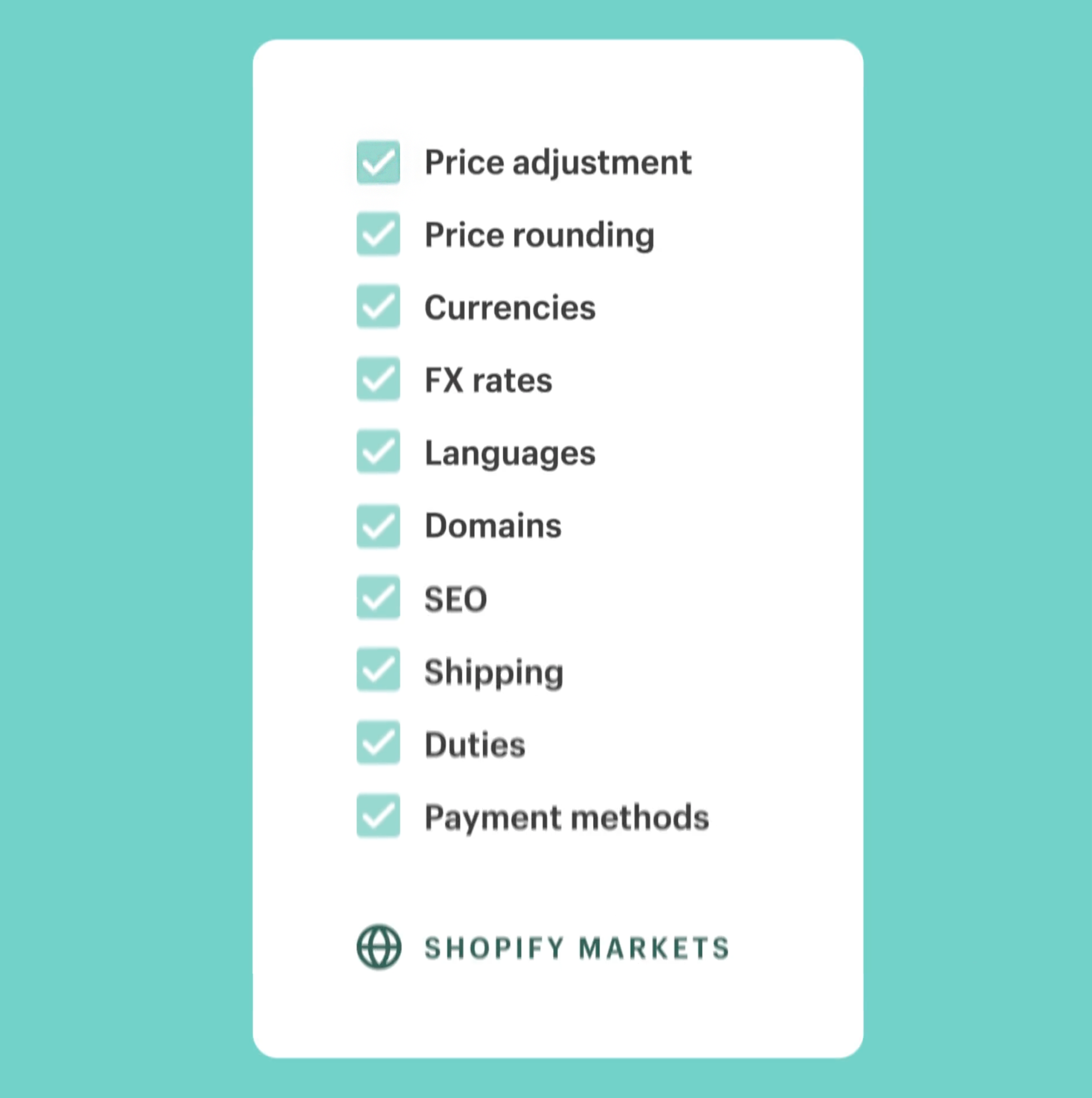
That’s a lot of tasks, but with Shopify Plus, most of them are pretty simple.
The busyman’s solution – Shopify markets
Are you too busy for all these steps? Just use Shopify Markets — an all-in-one international eCommerce solution for Shopify Advanced and Shopify Plus.
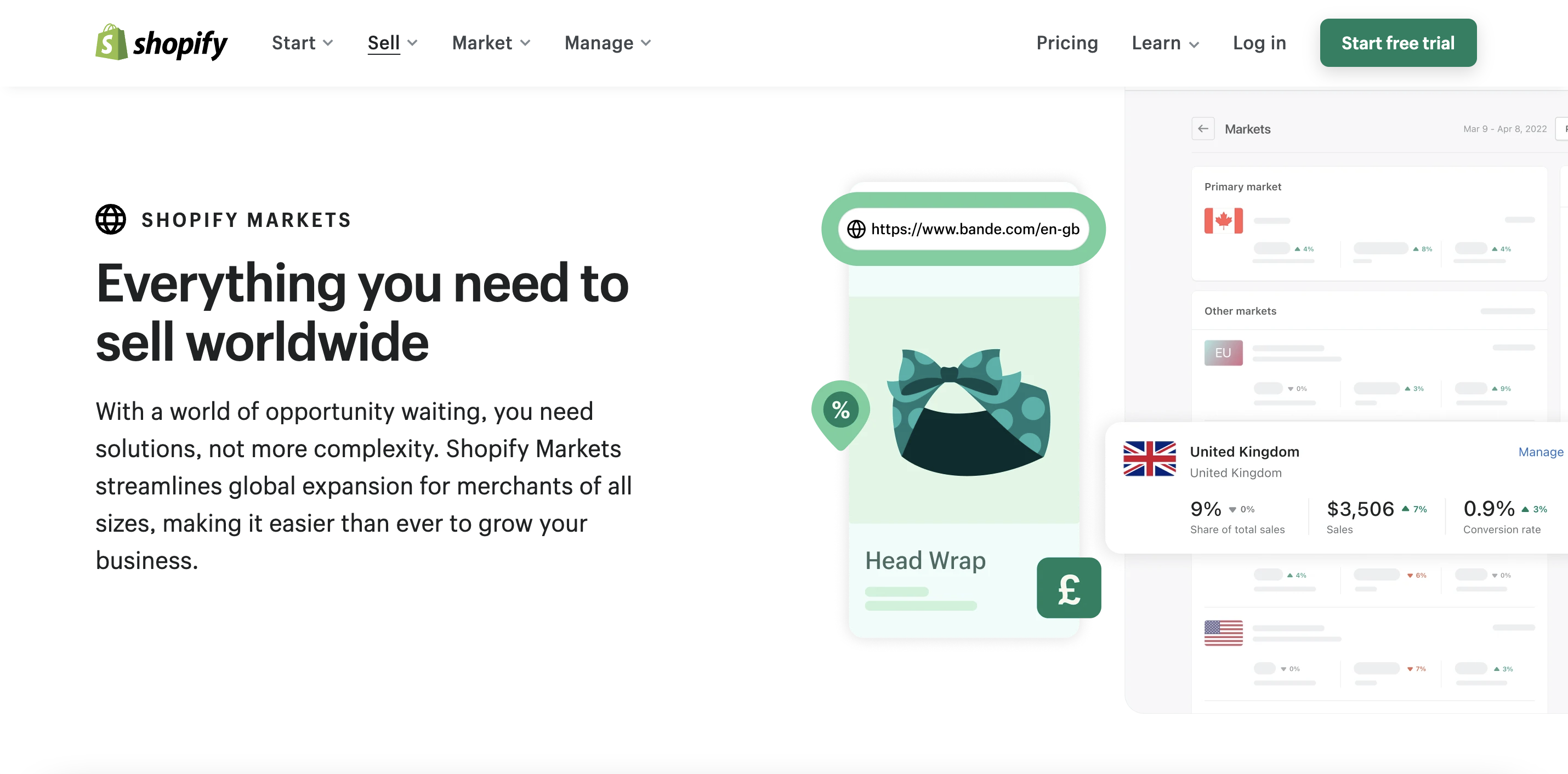
Getting started with Shopify Markets adds most of the functionality you need to sell worldwide. Just select the regions you’re selling in.
Play around with the settings and preferences to convert into local currencies and translate text. The program also estimates and collects duties for you. That’s everything on the must-have checklist except regional catalogs, regional storefronts, and regional fulfillment locations — and those are coming soon.
Shopify Markets for Shopify Plus covers almost everything you need to sell internationally. It’s the perfect one-stop solution to optimize Shopify Plus for international markets.
Price adjustment
Pricing strategy shouldn’t be restricted to the US. Take control and develop regional pricing strategies.
The easiest way to adjust pricing internationally is with Shopify Markets: an awesome beta program that handles a lot of the international details for you. If a beta program isn’t a good fit for your company, you still have two great options: price adjustment and price setting.
Price adjustments let you change the price for all items sold in another country. For example, you can increase the price by 20% in the UK and decrease it by 15% in Germany.
For Shopify Plus, price is as simple as tweaking info on a page.
- Go to Settings > Payments > Shopify Payments > Manage
- In the countries/regions section, click the country you want to adjust. Then, go to Price adjustment.
- Click + to increase the price and click – to decrease the price. Then, add the percent increase or decrease.
- Click save.
Adding individual product pricing is a little more complicated, but not impossible. It just requires a CVS file. You can read how to set individual product prices on the Shopify Docs page, or you can ask your development team to handle the technical details.
Currencies
Currencies are another big issue companies need to tackle. Customers are far more likely to buy products if they’re sold in the local currency.
If you have Shopify Payments, currencies are really easy to handle. Most Shopify Plus stores should use Shopify Payments, anyway — the fees are lower, and with such high transaction volume, the savings add up.
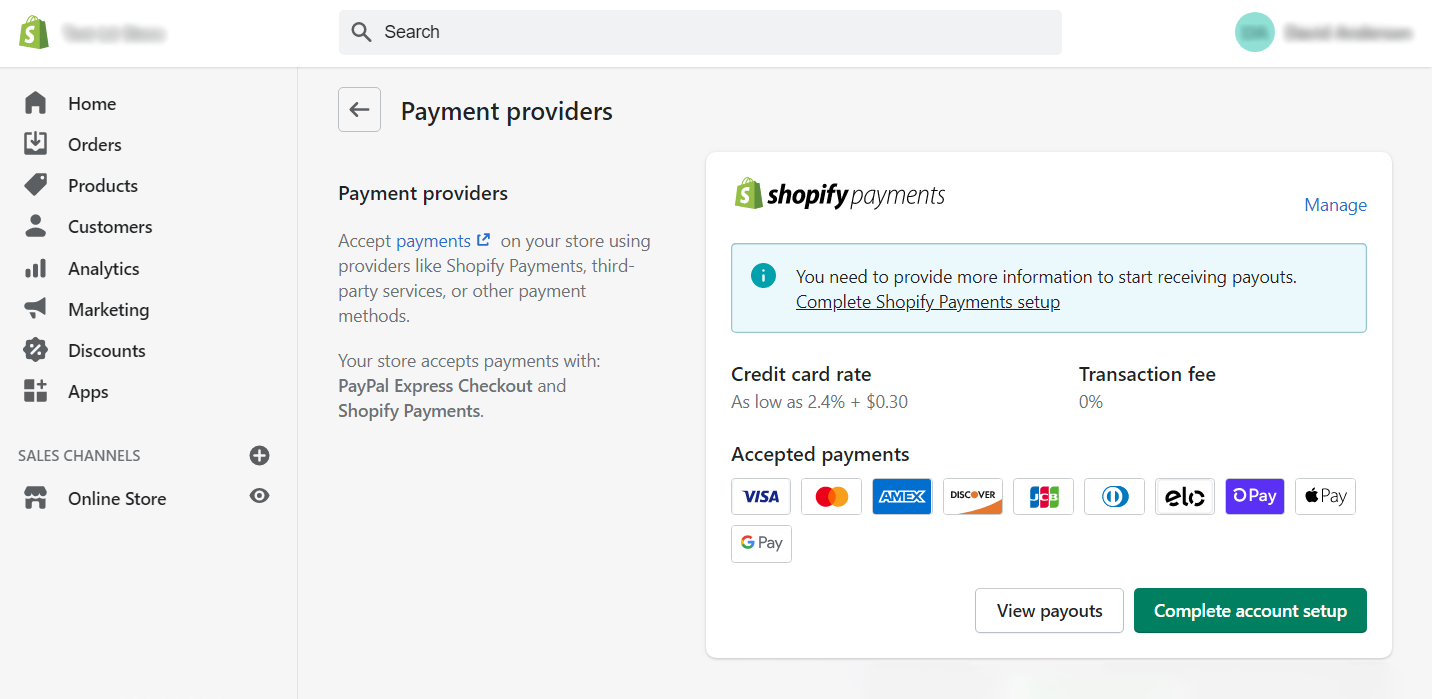 More importantly, Shopify Payments adds a currency selector.
More importantly, Shopify Payments adds a currency selector.
To enable multiple currencies on Shopify Plus, follow these steps:
- Go to Settings > Payments > Manage.
- Under Countries/regions, click the Add country/region button.
- Select one of the 133 supported currencies from the dropdown menu.
From here, you can either enable a currency selector or use the geolocation app to update currencies automatically.
Once you’ve added a currency, you can tweak rounding rules individually.
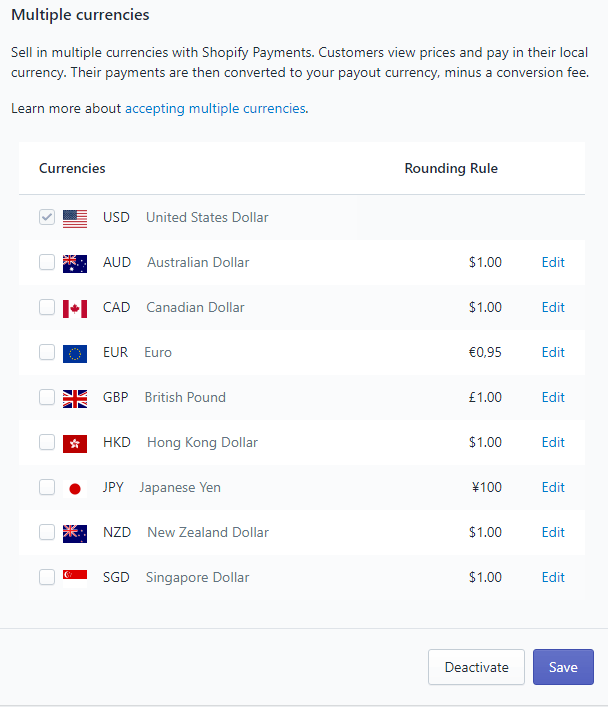
With so much control in such a simple interface, brilliant pricing strategy isn’t far off.
Exchange Rates
In order to sell products in the local currency, your store needs to do some conversion. That means you need to set Shopify exchange rates.
Conversion rates are always complicated. If you set up multiple currencies, Shopify figures out the exchange rate automatically. Usually, that’s the smart move. However, some currencies fluctuate a lot. Depending on how the price changes, a merchant could make or lose money between sale and payment.
This graph from kantox demonstrates how easy it is to make or lose money when a currency fluctuates.
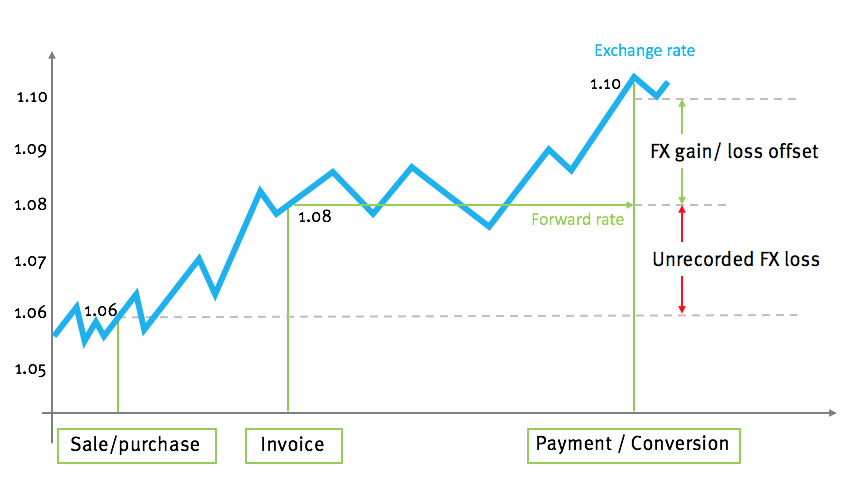
To avoid fluctuations, Shopify Plus customers can set a manual rate with the following steps.
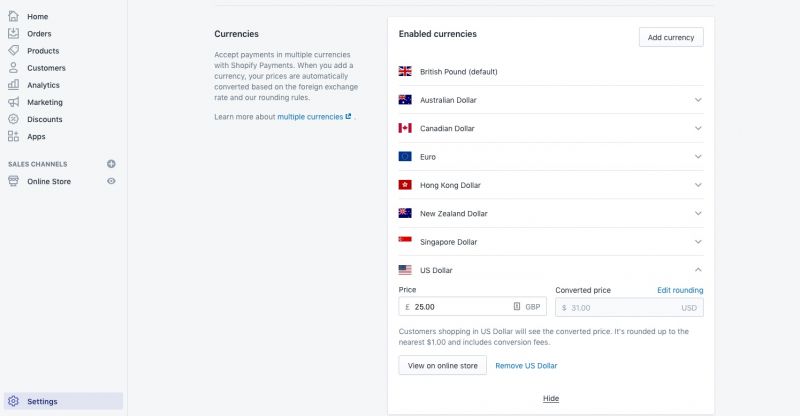
- Go to Settings > Payments > Shopify Payments > Manage.
- In the countries/regions section, edit the country you want to adjust.
- Under Exchange rate, choose a currency and click edit > Use a manual rate.
- Add the rate you want, then click save.
Setting a manual rate is risky. Currencies always fluctuate as their value changes. A manual rate can add some stability, but it could also cause you to gain or lose money in certain contexts. Before toying around with conversion, read Shopify’s post on currency conversion risks.
Price Rounding
Sometimes, you just want that neat $X.99 price tag, but exchange rates are never clean. With price rounding enabled, the number always looks exactly how you want.
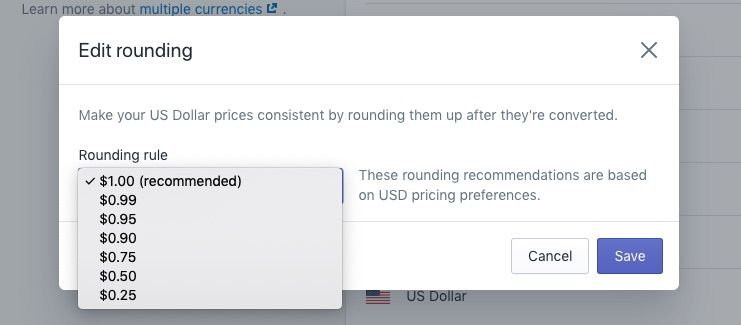
- Go to Settings > Payments > Shopify Payments > Manage.
- In the countries/regions section, find rounding and click enable.
- Set a rounding rule from the menu.
You can round each conversion to a nice, even number that will drive sales.
Regional domains and SEO
Want to refine your link-building strategy? Set some regional domains.
Regional domains are (again) easiest with Shopify Markets. It gives business the freedom to structure language-specific URLs as top-level domains, subdomains, or subfolders.
Top-level domain:fyresite.com → fyresite.fr
Subdomain:fyresite.com → fr.fyresite.com
Subfolder:fyresite.com → fyresite.com/fr
Each URL looks really similar to humans, but it changes how Google and other search engines crawl the website.
International ccTLD
A ccTLD (country code top level domain) tells search engines that the URL is intended for that specific country. It replaces the .com or .org at the end of the URL.
fyresite.com → fyresite.fr
The ccTLD you use depends on the country. Robert Allison has a great map of the codes for each country — the full version is available on SAS blogs.
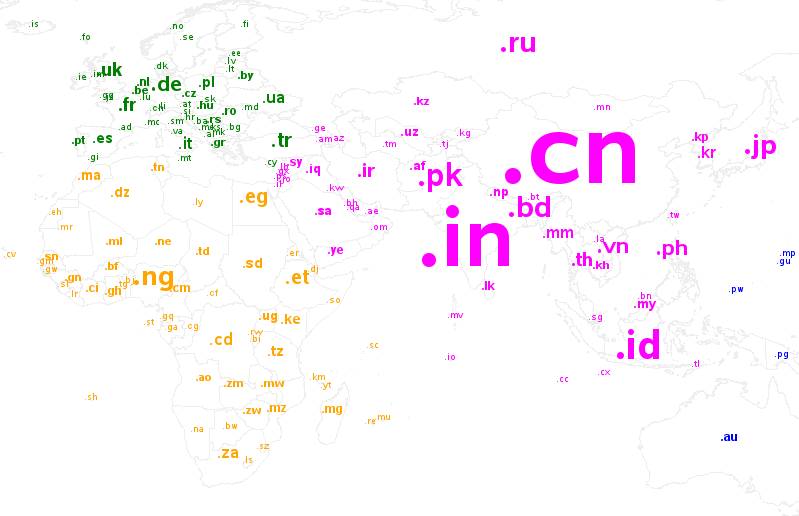
A ccTLD isn’t necessary for most international Shopify Plus websites. They used to make a pretty big difference, but Shopify Plus subfolders work just fine (plus you get to keep .com or .org). A ccTLD isn’t a bad option — and it’s super effective at what it needs to do. But unlike subfolders, a ccTLD requires extra domains — and the costs may add up.
Additionally, certain countries don’t suit ccTLD well. If your company sells to a multi-lingual region, like the EU, a ccTLD is probably a bad idea. EPRS graphed out the 24 official languages within the EU. There’s even more languages when you consider stateless languages like Basque.
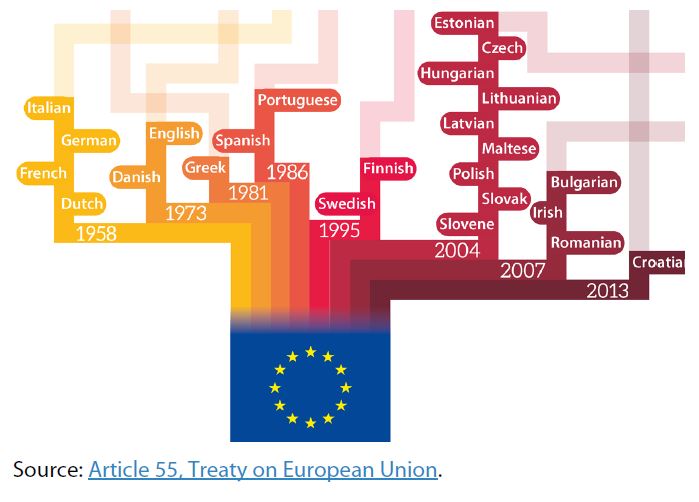
Similarly, if your company sells to multiple countries speaking the same language (like Spain and Mexico), using separate ccTLDs won’t be worthwhile (unless the specific pages are different). It would me much cheaper to just use subfolders.
However, it’s important to note that some countries require ccTLD. China, for instance, doesn’t have Google. Most people use Baidu instead, and ranking on Baidu is almost impossible without a .cn domain. Russia is another example of a country that requires ccTLD. It’s not explicitly mandatory, but websites without the ccTLD .ru won’t rank well on Yandex.
To figure out if your Shopify Plus store needs ccTLD or not, use this map. If a country doesn’t use Google, your SEO strategy may differ.
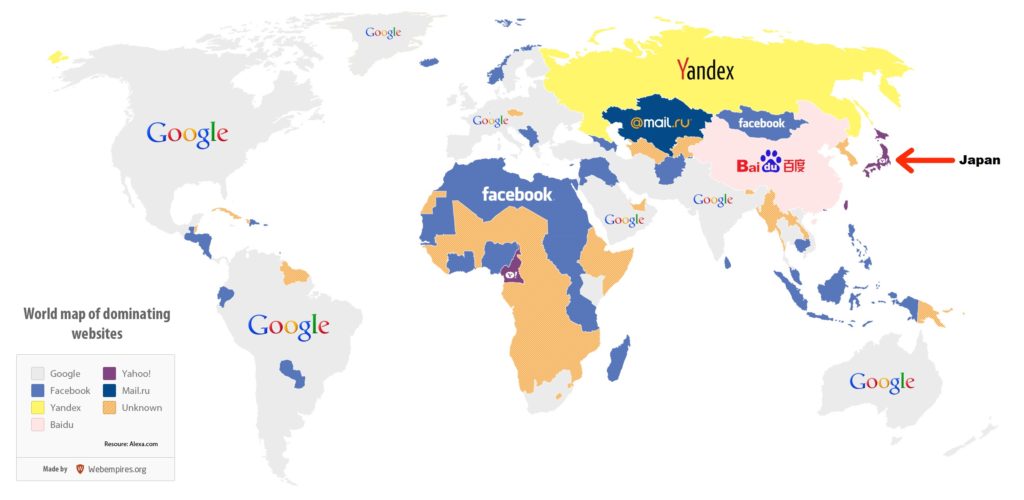
The ccTLD isn’t dead, but it’s costly and situational. Check the countries you want to sell to before picking a Shopify Plus URL structure.
International subdomain
A subdomain is a different separate section of a website. It comes before the main URL and is followed by a period.
fyresite.com → fr.fyresite.com
When your international site uses a subdomain, Google treats it like a separate website that’s connected to the main one. Google is a great example. The url docs.google.com references Google Docs.
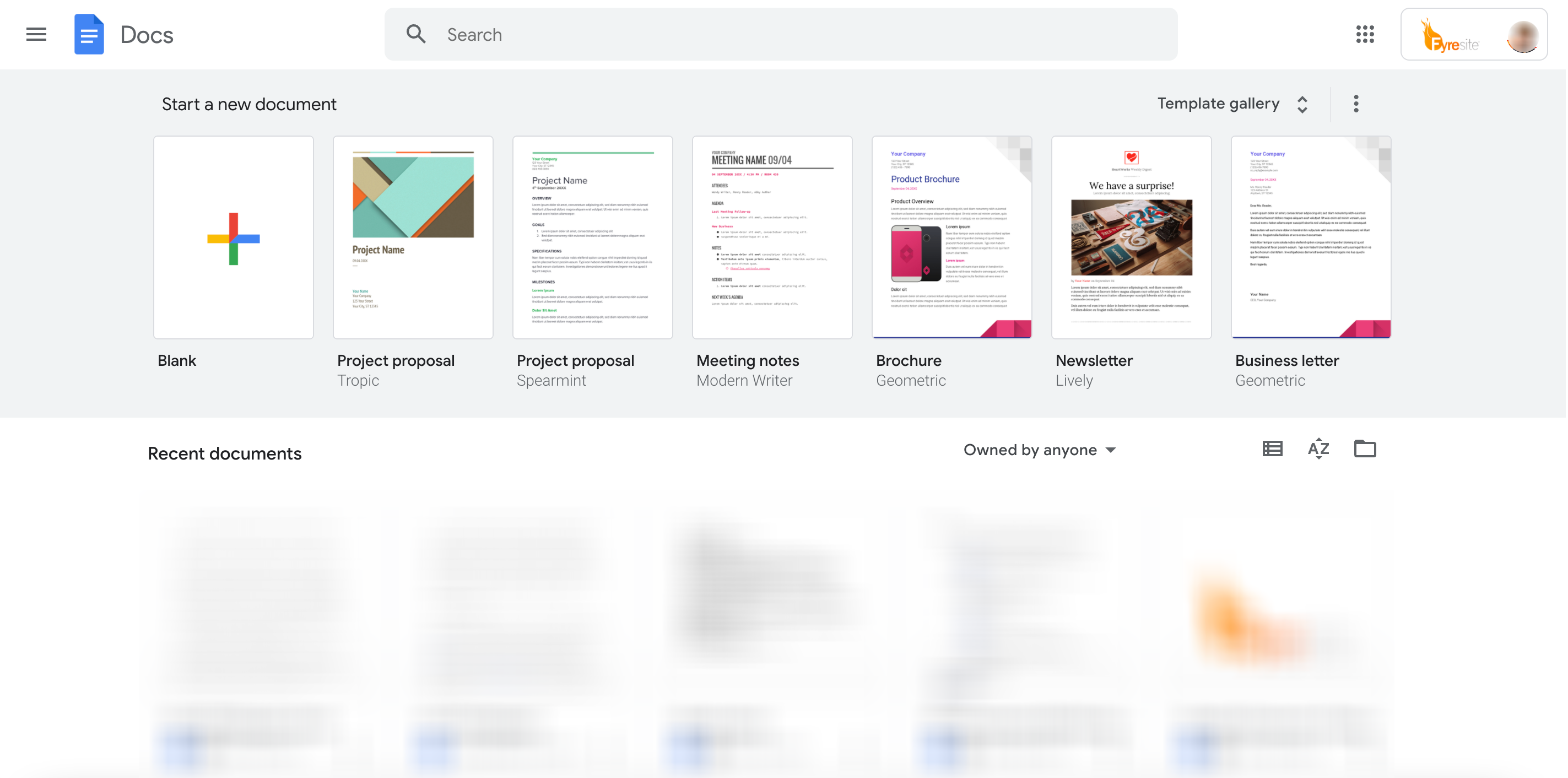
Meanwhile, the URL store.google.com references the google store.
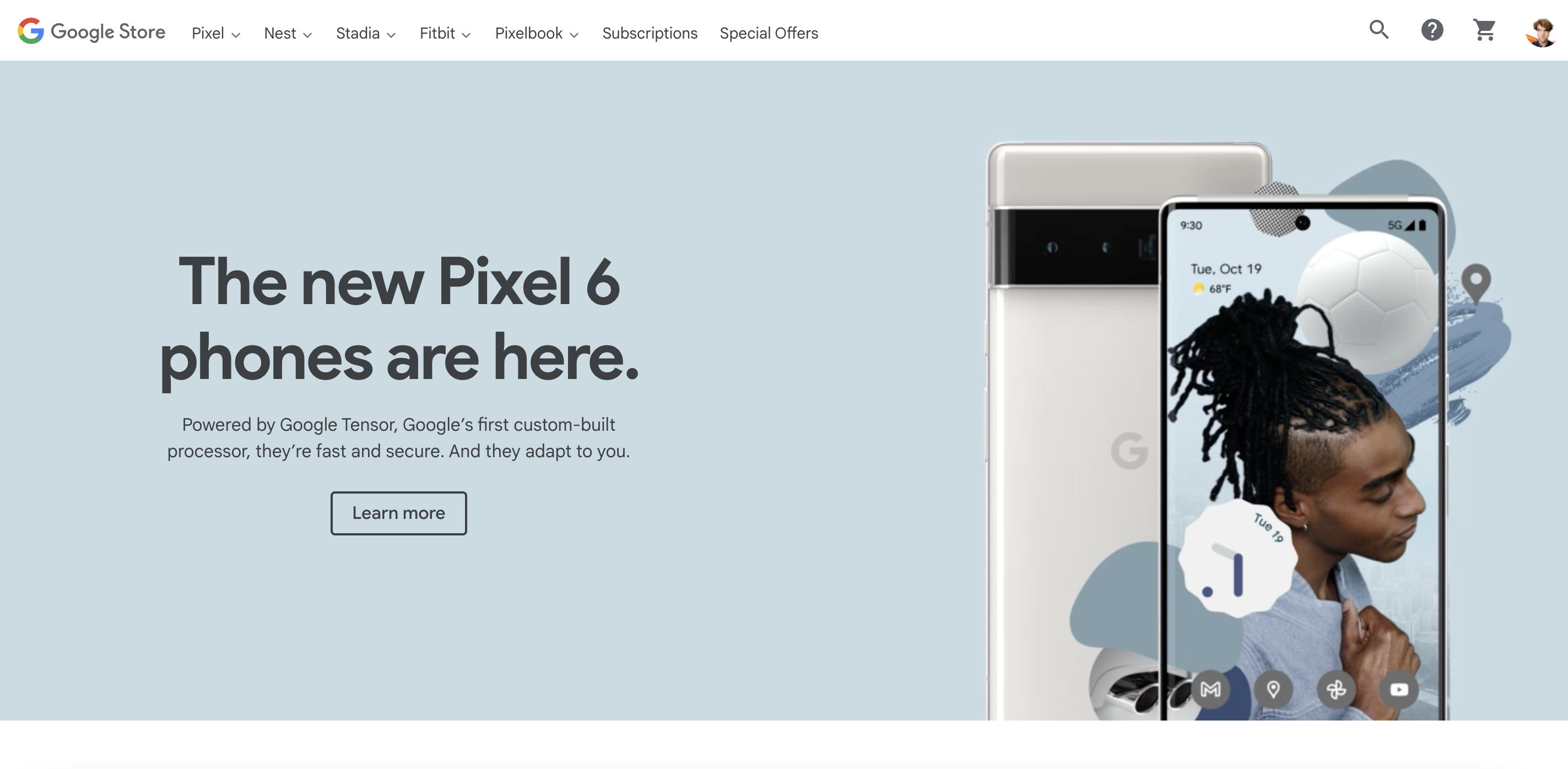
Both websites are completely different. They’re part of the broader google family, but they use a different design to serve a different function.
Using subdomains for languages instead of for separate web pages limits your growth. Look at the google store’s URL — they use the subdomain store for a separate store webpage, then set the language to English using a host language query (the whole ?hl thing at the end).
https://store.google.com/?hl=en-US
If google used a subdomain for different languages, they’d require a separate URL for the google store, then a separate subdomain for each language
en.googlestore.com
fr.googlestore.com
es.googlestore.com
. . .
The result is a messy URL schema that doesn’t accurately reflect the hierarchical relationship between google’s web pages.
Of course, there are specific cases where a subdomain is a good idea for an international store, but most Shopify Plus websites should save subdomains for other purposes.
International subfolder
Subfolders (or subdirectories) are smaller directories “underneath” the main domain. They follow the regular domain and start with a slash.
fyresite.com → fyresite.com/fr
It’s easiest to think of a subdirectory as a folder inside a bigger folder. Shopify Plus with Shopify Markets lets you store two versions of your website in separate subfolders.
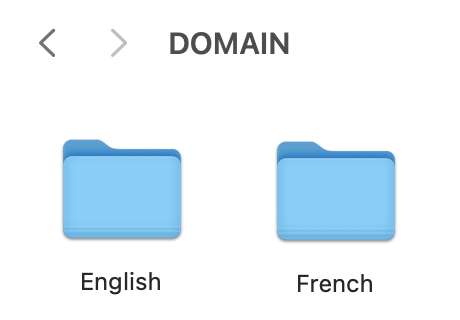
Subfolders are a fast, effective solution for businesses that want to roll out an international domain quickly. They’re fast, efficient, and they get to keep the SEO of the main domain. The only major tradeoff is that businesses may not get as many region-specific views, but the difference is pretty minor. Most international Shopify Plus businesses use subfolders — they’re just a simple and effective solution.
Because Shopify Plus is an all-in-one hosted solution, switching between options is surprisingly easy. Just go to the domains and languages settings and pick the option you want to try.
We highly recommend reading Shopify’s international link-building docs for more details — SEO and link building are pretty complex, and some extra info never hurt.
International shipping
Shipping internationally is actually really easy with Shopify Shipping. Shopify Shipping uses several different carriers to deliver goods right to the customers.
https://youtu.be/xC3tAMfF6go
These services work best in the United States, Canada, Australia, France, and the United Kingdom. If your company ships to another country, check Shopify’s docs on international shipping. The page may help you find more details about specific international carriers.
Duties and taxes
Duties and taxes are a big concern for lots of international businesses. Luckily, Shopify Plus makes them easier to handle.
There are two ways to handle duties: delivered duty paid (DDP) and delivered at place (DAP). DDP means you, the seller, handle the duties upfront. You can usually charge the customer at sale to make up for these costs.
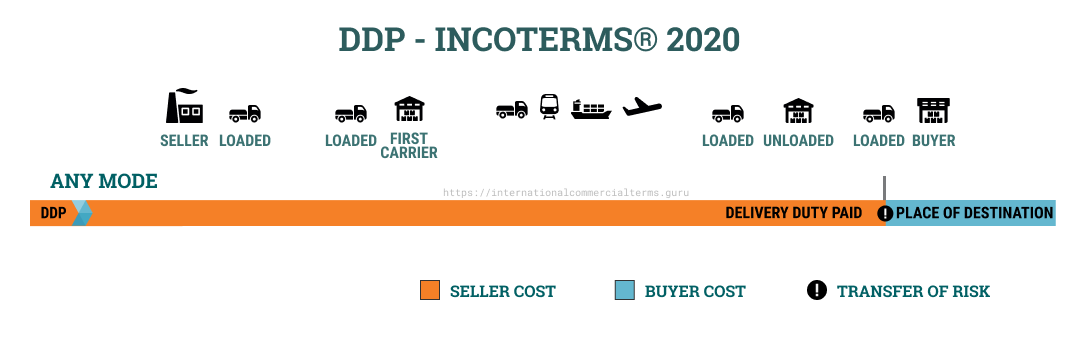
DAP requires the customer to pay on delivery. DAP usually has a less positive user experience and burdens customers with extra fees they hate, so DDP is usually the smartest choice.
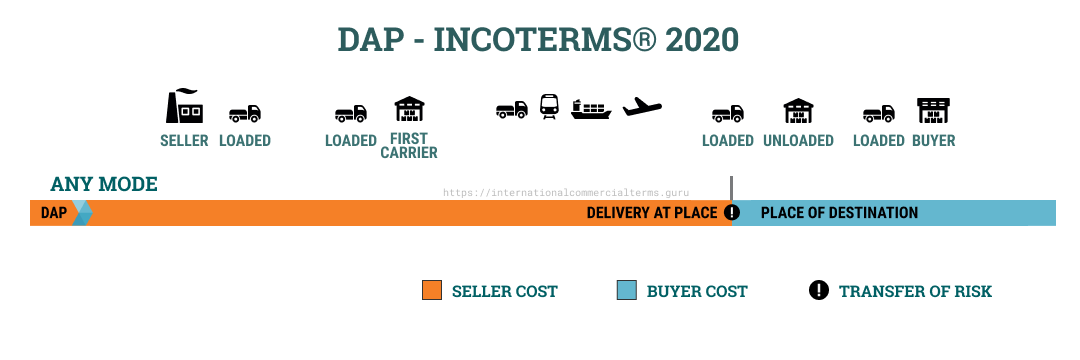
With Shopify Plus using Shopify Markets, you can charge DDP and taxes at checkout (see the docs). Follow these steps:
Add your country and HS codes using Shopify’s instructions
- Go to Settings > Taxes and duties > Duty and import taxes.
- Click Set up, then select the countries and regions you need to collect duties and import taxes from.
- Click Set up and rest easy.
These steps alone optimize your store for international duties and taxes.
Regional storefronts and catalogs
The gold standard of international eCommerce is the regional storefront: a different design for each country. This makes a lot of sense: different cultures have different design standards, product preferences, languages, and more. Fitting your store to your customer makes sales even more efficient.
Starbucks is a great example. The French website looks pretty predictable to a US audience — France and the United States have overlapping web design conventions.
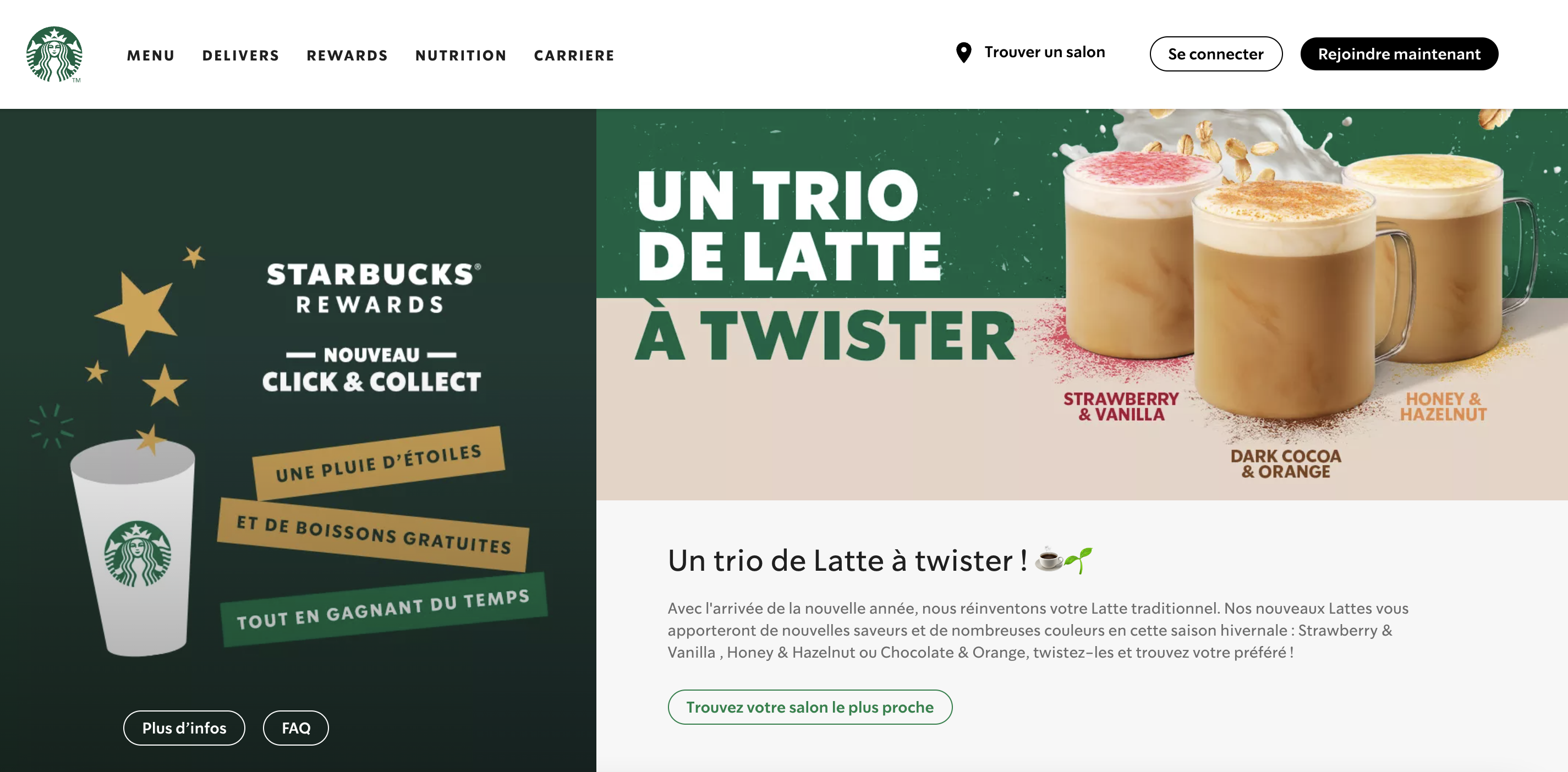
Japan, on the other hand, takes a vastly different approach. Green is traded in for a seasonal color backdrop. There’s more text, overlapping images, and a denser layout.
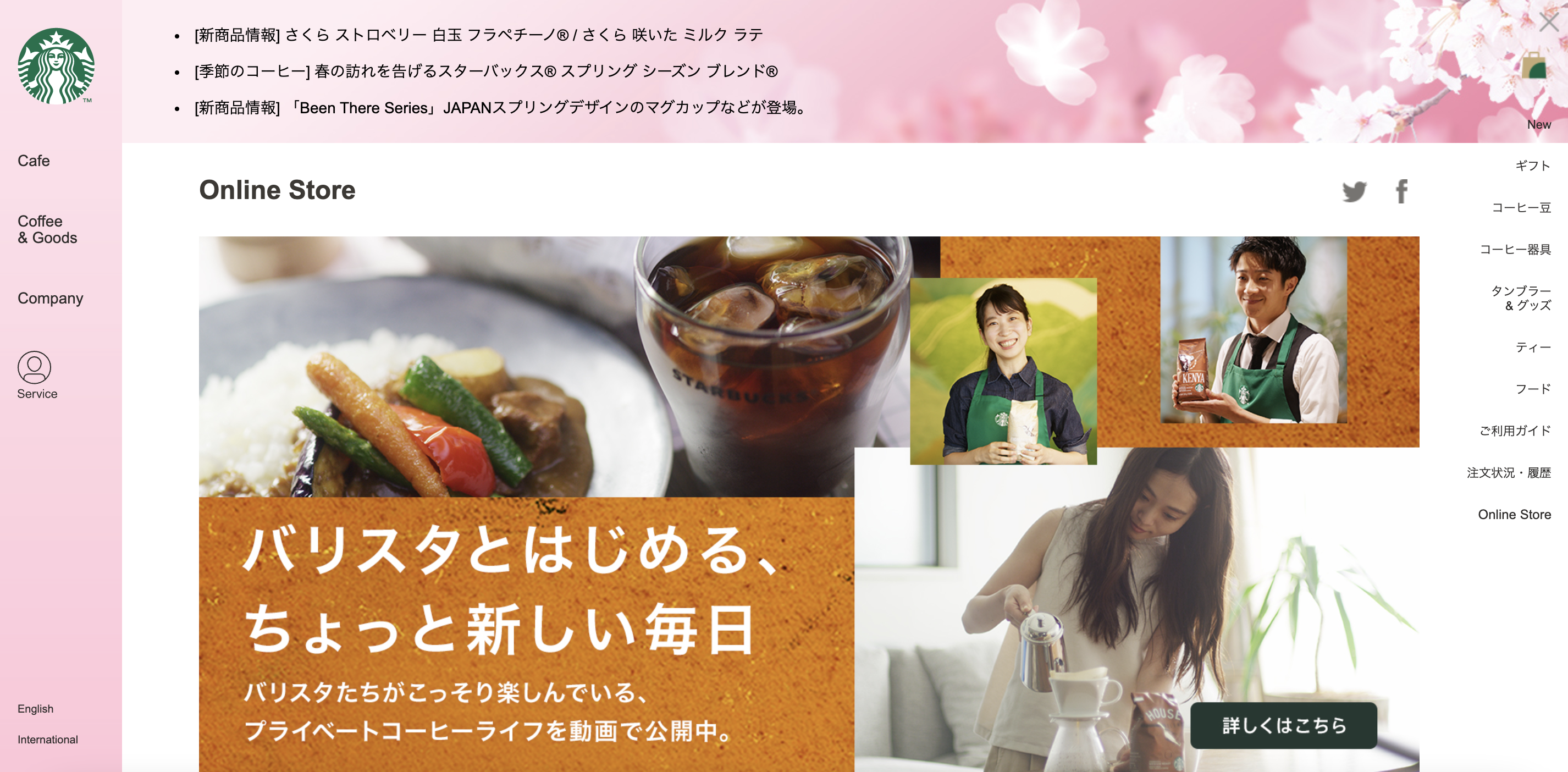
In Japan, that’s the standard. Customers are used to websites like this, so they’re more likely to buy. Other international stores should do this, too.
Right now, Shopify supports 20+ languages, which makes selling to other countries completely streamlined. Shopify Plus also comes with 10 unique storefronts, so you can design each one for different markets.
Shopify Markets is developing new features, too. Pretty soon, merchants will be able to customize a single storefront to fit different regions. Because Shopify Plus is an all-in-one enterprise platform, new features, data, and more constantly optimize the experience for international customers. That means it’s easier than ever to optimize Shopify Plus for international markets.
Optimizing Shopify Plus for international markets
Selling internationally seems really intimidating, but with the right tools and team, things get a lot easier. Shopify Plus and Shopify Markets alone make lots of those steps easy, including payments, taxes, duties, and SEO. With more updates, these features will only get better
If you’re considering Shopify, use our affiliate link for a free trial!
 Paul A
Paul A 
